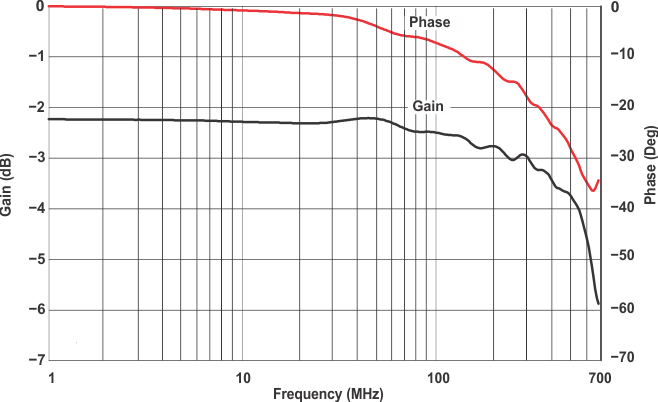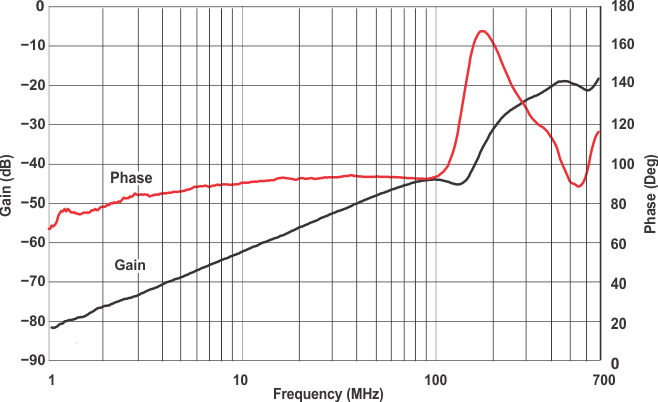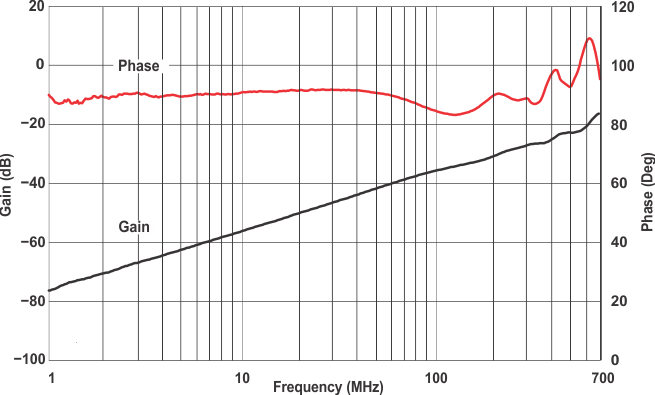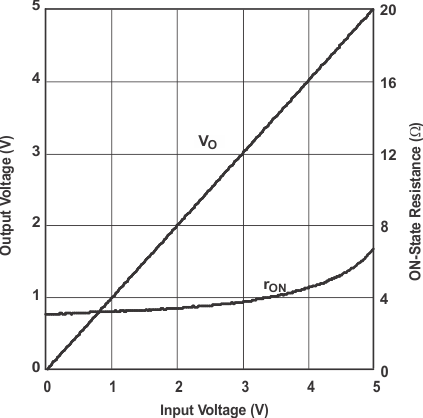SCDS176B SEPTEMBER 2004 – October 2019 TS3L110
PRODUCTION DATA.
- 1 Features
- 2 Applications
- 3 Description
- 4 Revision History
- 5 Pin Configuration and Functions
- 6 Specifications
- 7 Parameter Measurement Information
- 8 Detailed Description
- 9 Application and Implementation
- 10Power Supply Recommendations
- 11Layout
- 12Device and Documentation Support
- 13Mechanical, Packaging, and Orderable Information
Package Options
Refer to the PDF data sheet for device specific package drawings
Mechanical Data (Package|Pins)
- PW|16
- DBQ|16
- RGY|16
- D|16
- DGV|16
Thermal pad, mechanical data (Package|Pins)
- RGY|16
Orderable Information
6.8 Typical Characteristics

| Phase at 627 MHz, −36 Deg | ||
| Gain −3 dB at 627 MHz | ||

| Phase at 250 MHz, 137.92 Deg | ||
| Gain −26 dB at 250 MHZ | ||

| Phase at 250 MHz, 88.2 Deg | ||
| Gain −28.5 dB at 250 MHz | ||
